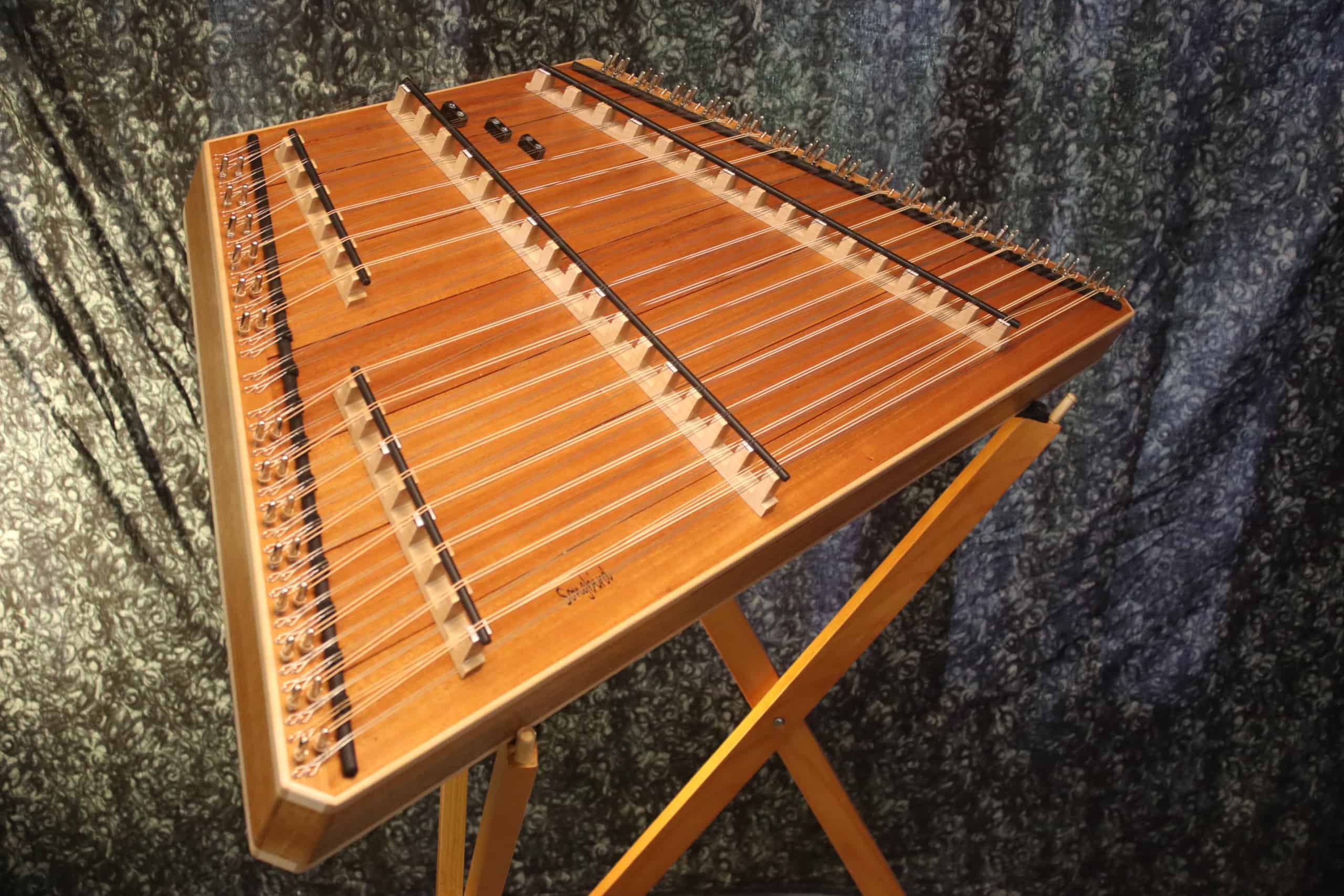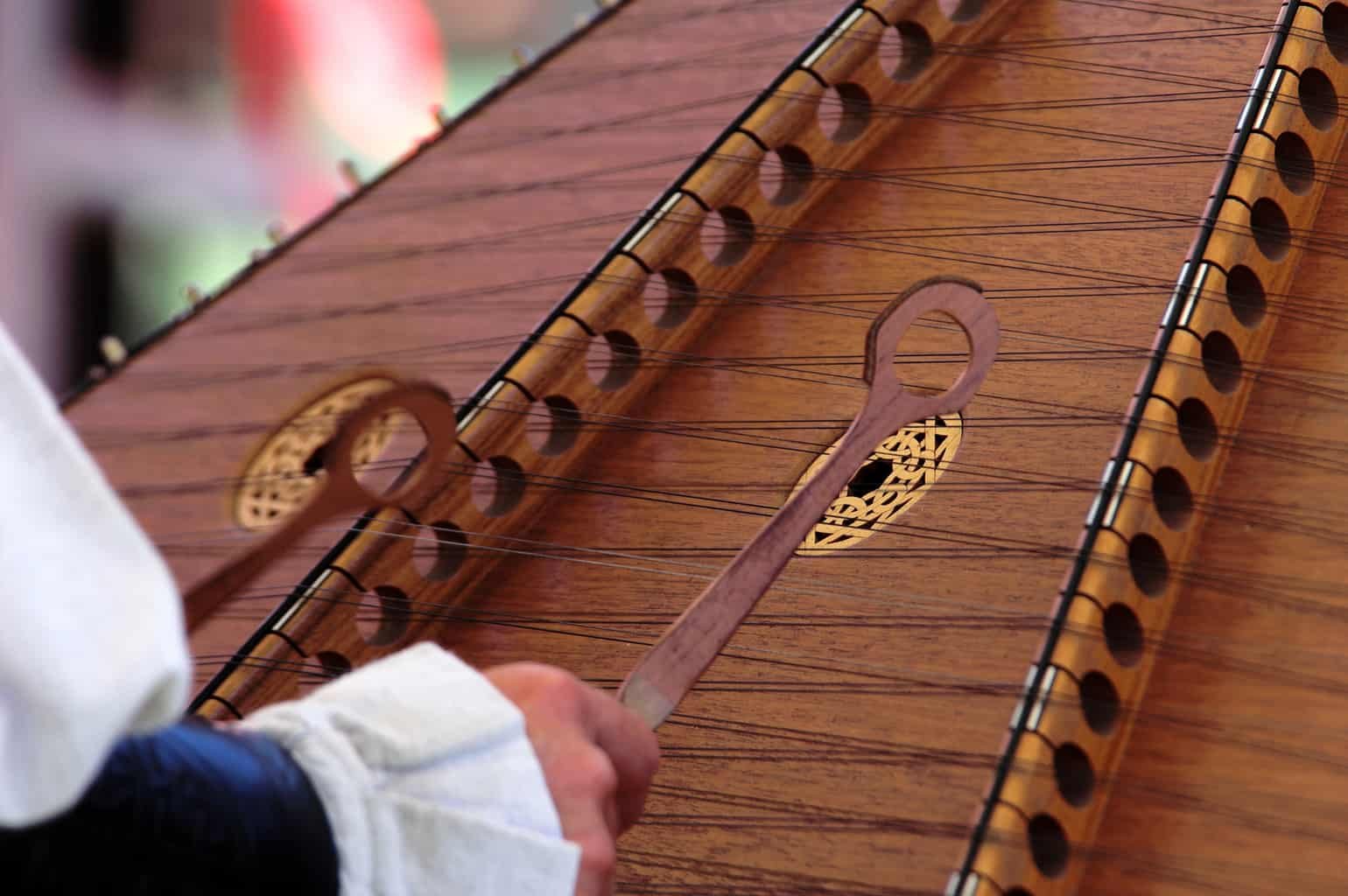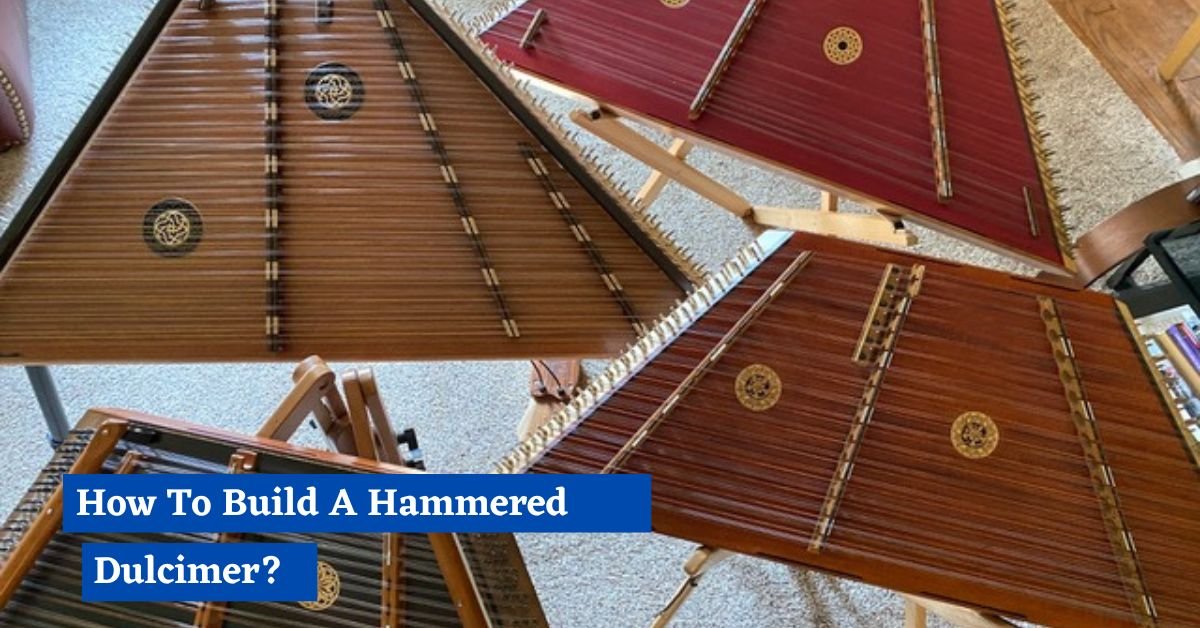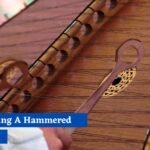How To Build A Hammered Dulcimer: To build a hammered dulcimer, shape a trapezoidal soundboard with sound holes and bridges. String the dulcimer, attach hammers to handles, and install dampers for control. Craftsmanship and attention to detail are crucial.
Understanding the Hammered Dulcimer
The hammered dulcimer is a stringed instrument with a trapezoidal soundboard and strings that are struck with small hammers. Before diving into the construction process, it’s crucial to have a solid understanding of the instrument’s components and how they work together to produce harmonious sounds. Familiarize yourself with the different parts, such as the soundboard, bridges, strings, and hammers, to gain a comprehensive understanding of the instrument’s construction and functioning.

Gathering the Necessary Materials and Tools
To begin building your hammered dulcimer, you’ll need to gather the necessary materials and tools. The key materials include wood for the soundboard, bridges, and sides, as well as strings, tuning pins, and dampers. Tools required for the construction process include a saw, chisel, drill, hammer, clamps, and various woodworking tools. Consider the type of wood you’ll be using, as it can greatly impact the tonal quality and durability of the instrument.
Constructing the Soundboard and Bridges
The soundboard is the heart of the hammered dulcimer and plays a crucial role in producing sound. Start by selecting a high-quality wood, such as spruce or cedar, and carefully shape it into a trapezoidal form. Carve out the sound holes and install the bridges, which will hold the strings at varying lengths to produce different pitches. The bridges should be securely attached to the soundboard, ensuring proper string placement and tension.
Stringing and Tuning the Dulcimer
Once the soundboard and bridges are in place, it’s time to string and tune your hammered dulcimer. Begin by attaching the strings to the tuning pins and securing them to the hitch pins on the instrument’s sides. Carefully adjust the tension of each string to achieve the desired pitch, ensuring an even distribution across the entire instrument. Patience and precision are key during this process, as proper tuning is essential for optimal sound quality.
Assembling the Hammers and Dampers
The hammers and dampers are vital components of the hammered dulcimer, allowing you to produce clear and distinct notes. Craft your own hammers using wood or purchase pre-made hammers, ensuring they are lightweight and well-balanced. Attach the hammers to wooden dowels, which will serve as the handles. Additionally, install dampers to control the sustain and resonance of the strings, providing further control over the instrument’s sound.

How do you make a homemade dulcimer?
Creating a homemade dulcimer requires woodworking skills and attention to detail. Begin by selecting quality wood for the soundboard, bridges, and sides. Shape the soundboard into a trapezoidal form, adding sound holes and attaching bridges. String the dulcimer using tuning pins and secure them to hitch pins.
Tune the strings carefully for desired pitch. Craft hammers using wood or purchase pre-made ones. Attach the hammers to handles made of wooden dowels. Install dampers for additional control. With patience, precision, and the right tools, you can construct a beautiful dulcimer tailored to your preferences and playing style.
What is the hammered dulcimer made of?
The hammered dulcimer is typically made of various materials. The soundboard, responsible for sound resonance, is commonly crafted from spruce or cedar due to their tonal qualities. The bridges, which hold the strings, are typically made of hardwood such as maple or cherry.
The sides, often referred to as the pin blocks, are also made of hardwood for durability. Strings can be made of steel, phosphor bronze, or nylon, depending on the desired tone and playability. The hammers are usually constructed with wooden heads and handles. Overall, the materials used in a hammered dulcimer contribute to its tonal characteristics and structural integrity.
How many strings are on a hammered dulcimer?
The number of strings on a hammered dulcimer can vary depending on the design and player preference. Traditional hammered dulcimers often have a range of 12 to 20 courses of strings, with each course consisting of two or more strings tuned in unison or octaves.

This can result in a total string count ranging from 24 to 80 or more. Modern variations of the hammered dulcimer may have additional courses or a different string configuration, allowing for an extended range and tonal possibilities. The number of strings influences the overall sound and versatility of the instrument.
Is the hammered dulcimer hard to play?
The hammered dulcimer can be challenging to play initially, but with practice, dedication, and a patient mindset, it can be mastered. Learning to strike the strings accurately with the hammers to produce clear and distinct notes requires coordination and precision.
Understanding the layout of the strings and developing hand-eye coordination to navigate between them takes time. Additionally, gaining proficiency in techniques such as damping and playing chords adds another layer of complexity. However, with consistent practice and a passion for the instrument, the hammered dulcimer can become an enjoyable and rewarding instrument to play.
FAQs
How long does it take to build a hammered dulcimer?
The time required to build a hammered dulcimer varies depending on your woodworking skills and the complexity of the design. On average, it can take anywhere from several weeks to a few months to complete the construction process.
Do I need prior woodworking experience to build a hammered dulcimer?
While prior woodworking experience can be beneficial, it is not necessarily a prerequisite. With the right resources, patience, and attention to detail, anyone with a passion for craftsmanship can successfully build a hammered dulcimer.
Can I customize the design of my hammered dulcimer?
Absolutely! Building your own hammered dulcimer allows for a high level of customization. You can experiment with different wood types, finishes, and even modify the size and shape of the instrument to suit your preferences and playing style.
Conclusion
Building a hammered dulcimer is a remarkable undertaking that combines craftsmanship, musicality, and creativity. By following the steps outlined in this guide and investing time and dedication into the project, you can create a beautiful instrument that resonates with your own unique style and produces captivating melodies. As you embark on this journey, embrace the art of construction and the joy of playing, and let your homemade hammered dulcimer unleash the enchanting sounds within you.


